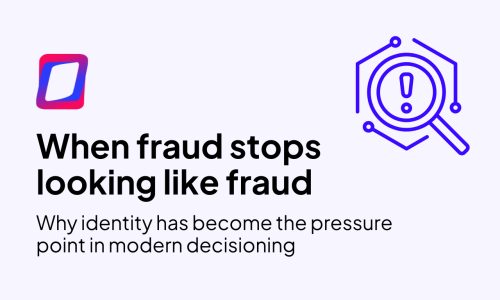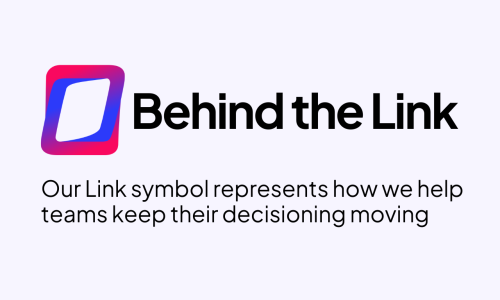From Risky to Risk-Free: How AI is Driving Business Inclusion and Security
“Artificial intelligence will not replace humans, but humans using artificial intelligence will replace humans not using artificial intelligence.” The quote is not banal, as it comes from one of the leading experts in financial technology and digital banking, Chris Skinner. Author of several books, such as Digital Bank: Strategies to Launch or Become a Digital Bank and The Future of Banking in a Globalised World. He is also the founder and director of the financial research firm The Finanser Ltd. and a renowned speaker at global financial technology conferences.
This quote warns the financial industry to embrace AI and other emerging technologies if businesses want to remain competitive. Indeed, AI is expected to have a major impact on financial activity, as we have discussed on occasion concerning debt collection. Moreover, its impact is growing in bank fraud prevention, a discipline in which machine learning and data analysis techniques can help banks detect patterns and anomalies in customer behaviour and financial transactions. In other words, just what is needed to identify and prevent fraud. Hence, Artificial Intelligence is becoming increasingly crucial in GDS Link Solutions.
This technology can help banks perform more accurate risk analysis and detect patterns indicating potential fraud, such as unfamiliar devices used for transactions or unusual account activity patterns. In addition, machine learning models can also analyse large amounts of historical data to detect patterns and anomalies in customer behaviour that may denote fraud — for example, detecting unusual transactions on a bank account and alerting the bank to investigate further.
Its emergence in the banking sector, together with the development of the digital transformation of society, is already having a significant impact on something inherent to this industry: the gradual disappearance of bank branches. We are talking about a technology designed to improve efficiency and the customer experience while reducing costs and the time necessary to carry out banking tasks. Some of the impacts of artificial intelligence in bank branches include:
- Improve customer service by providing immediate and accurate responses to queries and questions. For example, AI-based chatbots can provide instant and personalised assistance to online customers, reducing the need to visit a bank branch to get answers to simple questions.
- Automate processes, like routine tasks such as identity verification, credit analysis and payment processing. This reduces the time customers wait in a branch, which can help reduce operational costs.
- Data analysis, to identify patterns and trends in customer behaviour that can improve decision-making in risk management, product development and personalisation of the customer experience.
- And as already mentioned, fraud prevention undoubtedly enhances the financial security of customers and the banks’ ability to protect them from potential losses.
Artificial Intelligence can sometimes be a barrier to financial inclusion, especially among the older population or those more likely to be impacted by the technology gap. However, this analysis results from ignorance, as the reality differs from these unfounded fears.
In terms of financial inclusion, AI has several advantages, such as:
- Improved accessibility for people who have difficulty reaching a physical bank branch or who have trouble using conventional apps or websites. AI-based chatbots can provide immediate and personalised responses.
- Personalised services for delivering an experience more tailored to each individual’s financial needs.
- Credit risk detection, precisely to provide facilities to customers who are more likely to default on their loans. This also benefits the bank by expanding its customer base and building customer loyalty.
- Cost reduction that translates into lower prices for certain services.
In terms of the impact on older people, there are several approaches that banks can take to ensure that financial services remain accessible, even if they are not sufficiently digitally literate. These include the following:
- Technology training, to help this segment of the population better understand mobile apps, online banking and other digital banking services.
- One-on-one assistance, may include home or in-person visits to help customers set up their mobile banking applications or understand how to use online banking services.
- Improved accessibility, as we have already seen in the section on financial inclusion, which in the specific case of digital solutions translates into a UX adapted to this segment, with larger font sizes, high-contrast colours and more intuitive navigation.
- Hybrid banking services, which allow combining online banking for most daily operations, but with the option of accessing services in person when necessary, either at a physical bank branch or through personalised telephone support.
In short, the challenge posed by the adoption of Artificial Intelligence is more for the companies that tackle it than for customers, as the latter will always benefit from the disruption it entails. Because of its solid inclusive capabilities and lower costs that boost opportunities and reduce credit and fraud risks, AI is an excellent ally of banking customers.
On the banks’ side, the risk is not in its adoption but in its non-adoption. As with people and the quote at the beginning of this post, AI is not destined to replace banks, but banks that use AI will replace those that do not introduce it in their logbooks.
Recent articles

When Fraud Stops Looking Like Fraud
Read article
Behind the Link
Read article





